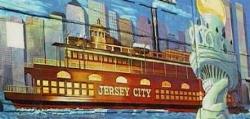 |  |  |
|
| ||
 |  |  |
 |  |  |
|
| ||
 |  |  |

Originally appeared in on Sunday, March 11, 2001
Acting Gov. Donald T. DiFrancesco has spent the past month defending his role in a series of real estate ventures that went sour during the last decade.
But there is one footnote to DiFrancesco's real estate resume that he hasn't discussed: He doesn't own the home he lives in.
Nor the businesses that have brought him income, nor the shore house on Barnegat Bay in Brick Township where his family summers. That's because DiFrancesco transferred title of the properties to his wife, Diane, between November 1994 and January 1995.
DiFrancesco, who is running for governor this year, owns only two vacant lots: one in Scotch Plains and the other in Green Brook with a longtime friend, his chief spokesman said.
In the day-to-day routine of the DiFrancesco household, the transfer of ownership meant little. DiFrancesco and his wife pay for the mortgage, taxes, and upkeep of the properties through a joint checking account, a top aide said.
But from a legal standpoint, the transfer could prevent his home, beach house, and businesses from being seized to pay off creditors under most circumstances. It's a tactic experts call "asset protection."
DiFrancesco began transferring ownership of his properties less than a year after a moneymaking real estate venture in Chatham turned into a money loser, and a bank that held the mortgage threatened to foreclose on the property.
DiFrancesco's chief spokesman and his lawyer said his financial troubles with the Chatham property had nothing to do with his decision to put the other properties in his wife's name. They say the move was made for an unrelated reason: to protect his assets from potential lawsuits leveled at his former Somerset County law firm, where he was a partner.
"It was essentially to protect Don, as well as any other partners in a firm, from lawsuits in which they have no responsibility," said Tom Wilson, DiFrancesco's chief spokesman. DiFrancesco resigned from the firm in January.
Legal experts say people who sue law firms for malpractice sometimes name every partner of the firm as a defendant, even if they did not have direct involvement with the case in dispute. Experts call it the "shotgun" approach, an attempt to broaden a plaintiff's chances of winning a major claim.
DiFrancesco's firm -- DiFrancesco, Kunzman, Coley, Yospin, Bernstein, and Bateman -- had malpractice insurance at the time that protected the firm for up to $5 million in damages from such suits. But as the firm began handling larger, multimillion-dollar contracts, the partners were still at risk of being liable, said John Coley, the firm's managing partner.
Coley said he recommended that every partner in the firm begin transferring assets to their spouses as added protection. Coley, who also transferred his assets to his wife, Pamela, described the practice as strictly a precautionary measure, not as a hedge against a particular looming judgment. State law prohibits the transfer of assets to protect them from a pending or recent judgment.
"You have to do this before you are aware of anything," Coley said.
Bennett J. Wasserman, a Hackensack lawyer, who teaches malpractice law at Hofstra University Law School on Long Island, said such transfers to a spouse are "not uncommon."
"There is certainly nothing wrong with the owner of a law firm, as a purely precautionary matter, to switch assets out of his name," Wasserman said.
But Neil Callahan, a Newark attorney who defends lawyers and law firms in malpractice cases, said the practice is "fairly unusual." While it is a perfectly plausible method of protecting assets, most burgeoning firms generally purchase more malpractice insurance.
"If you are handling the kind of work involved in more sophisticated, more high end [dollars], you can always increase the amount of insurance," Callahan said. Other lawyers, he said, simply may not want to make the swap, fearing that it would forfeit any future claims on the property.
DiFrancesco's real estate woes began in 1994 when he stopped making payments on a loan he and his brother, Paul, took out to buy a building on Main Street in Chatham when one business tenant in the building closed and another failed to pay the rent.
To pay off $850,000 owed to the bank, DiFrancesco took a second mortgage on his Scotch Plains home, dipped into personal savings, and borrowed $575,000 from an uncle and three family friends.
The loan has become a source of controversy for DiFrancesco in the last month. Among those who lent him money was engineer Anthony Sartor, and M. Joseph Montuoro, two longtime DiFrancesco associates whom DiFrancesco later recommended for high-level state appointments. DiFrancesco denied any link between the loan and the appointments.
A year later, a court judgment required DiFrancesco, his brother Paul, and a cousin, Ernest, to pay $535,000 in principal and interest to a longtime friend who lent them money to buy properties in a condominium project that later failed.
DiFrancesco, who reached a settlement with Scott to pay $225,000, borrowed the cash from his law partner to pay the settlement. Later, a major developer, K. Hovnanian Companies, repaid DiFrancesco's debt as part of a down payment to buy the properties. DiFrancesco has denied that Hovnanian received any special treatment in return for covering the debt.
By CHARLES STILE
Trenton Bureau
 Your Ancestors' Story |
 Bruce Springsteen's Jersey Shore Rock Haven! |

|
UrbanTimes.com |